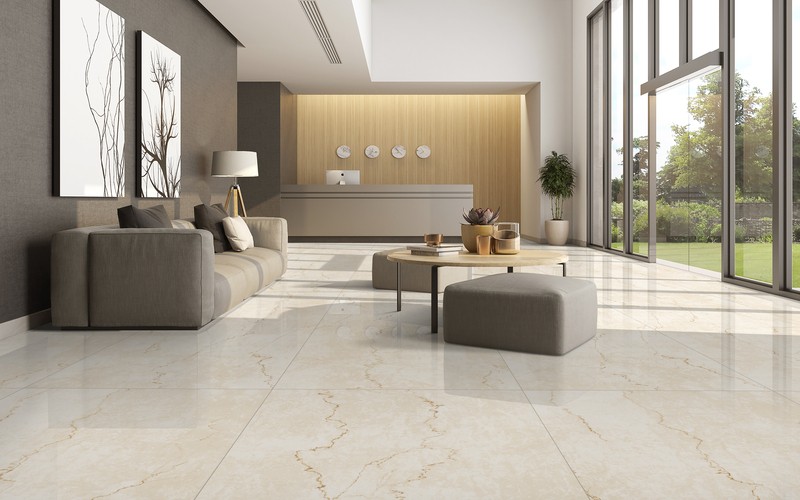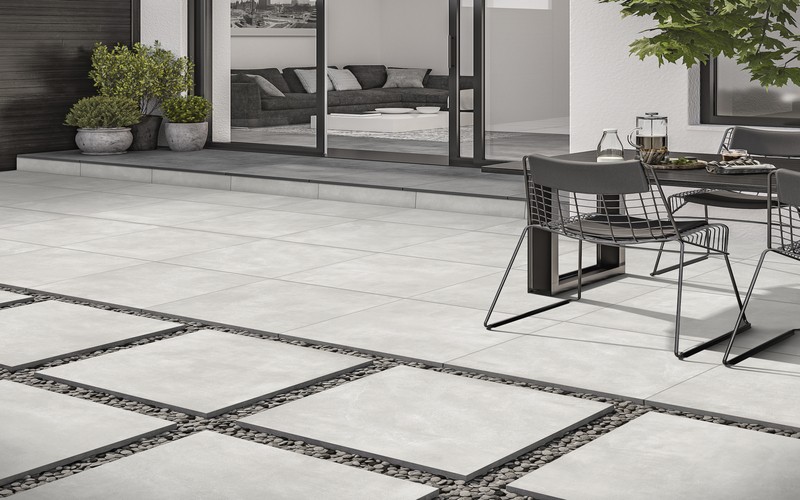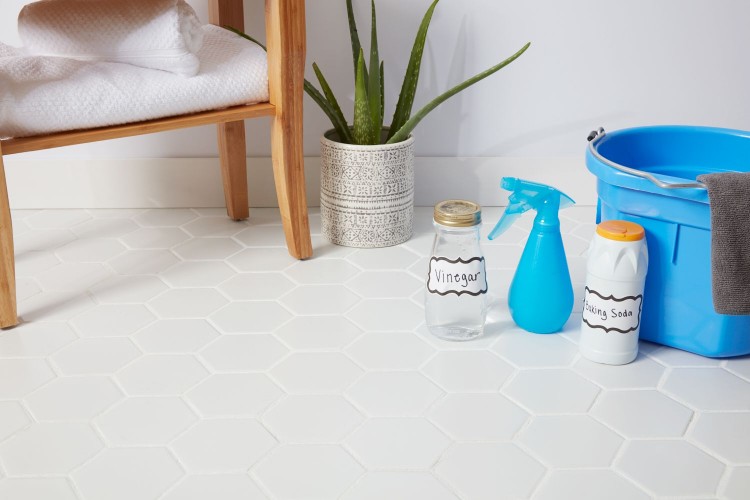How do glazed and unglazed floor tiles differ?
- News
- 24 Aug 2023

Glazed and unglazed floor tiles are two common types of ceramic or porcelain tiles used in flooring applications. They differ primarily in terms of their appearance, characteristics, and maintenance requirements. Here's a breakdown of the key differences between glazed and unglazed floor tiles:
-
Appearance:
- Glazed Tiles: Glazed tiles have a layer of glass-like material applied to the surface, which gives them a shiny, glossy finish. This layer can come in various colors and designs, allowing for a wide range of aesthetic options. Glazed tiles are often used to create vibrant and decorative patterns.
- Unglazed Tiles: Unglazed tiles do not have the glassy layer on the surface. They have a more natural and matte appearance. The color of unglazed tiles tends to be more subdued and earthy, making them suitable for spaces with a rustic or understated look.
-
Texture:
- Glazed Tiles: The glazing process creates a smooth and glossy surface texture that is easy to clean and maintain. However, this smoothness can sometimes make glazed tiles slippery, especially when wet.
- Unglazed Tiles: Unglazed tiles have a textured surface that provides better traction, making them a safer option for areas prone to moisture, like bathrooms or outdoor spaces.
-
Durability:
- Glazed Tiles: The glaze on the surface of these tiles adds an extra layer of protection against stains, scratches, and wear. However, the glaze itself can be susceptible to chipping or cracking over time.
- Unglazed Tiles: Since unglazed tiles don't have a protective layer, the color and texture are consistent throughout the tile's body. This can make them more durable in terms of appearance, as any chips or scratches are less noticeable.
-
Maintenance:
- Glazed Tiles: The smooth surface of glazed tiles makes them easy to clean, as dirt and stains don't penetrate as deeply. Regular sweeping and occasional mopping are usually sufficient to keep them looking clean.
- Unglazed Tiles: Unglazed tiles might require a bit more effort to clean because their textured surface can trap dirt and grime. A deeper cleaning routine might be needed to maintain their appearance.
-
Applications:
- Glazed Tiles: These tiles are commonly used in indoor spaces, such as kitchens and living areas, where aesthetics play a significant role. They are less commonly used in areas where slip resistance is crucial, such as bathrooms or outdoor patios.
- Unglazed Tiles: Due to their slip-resistant texture, unglazed tiles are often chosen for spaces that are exposed to moisture, including bathrooms, kitchens, and outdoor areas.
let's delve deeper into the characteristics and considerations of glazed and unglazed floor tiles.
Variety of Designs: Glazed tiles are known for their versatility in design. The glazing process allows for intricate patterns, vibrant colors, and even photo-realistic imagery to be applied to the tile's surface. This makes them an excellent choice for creating visually striking focal points in interior design. From traditional to contemporary styles, glazed tiles offer endless creative possibilities.
Natural Aesthetic: Unglazed tiles have a more organic and natural appearance. Their matte finish and subdued colors lend a touch of authenticity and warmth to spaces. These tiles are favored for environments that emphasize a rustic, earthy, or minimalist ambiance. If you're aiming for a more subdued and calming atmosphere, unglazed tiles can be an excellent choice.
Durability Under Stress: In high-traffic areas, such as commercial spaces or busy homes, glazed tiles might prove more resilient. The glazing process adds an extra layer of protection that guards against staining and wear, making them well-suited for places with heavy foot traffic. However, in areas where the tiles might be subject to impact, such as workshops or garages, unglazed tiles' more robust body might better resist chipping and cracking.
Safety and Slip Resistance: Unglazed tiles are particularly advantageous in areas where slip resistance is paramount. Their textured surface provides a higher level of traction, reducing the risk of accidents, especially in wet or damp conditions. This makes them a logical choice for bathrooms, kitchens, pool decks, and outdoor patios, where the potential for water-related mishaps is higher.
Maintenance Intensity: While glazed tiles might be easier to clean due to their smooth surface, unglazed tiles can also be maintained effectively with proper care. Regular sweeping and vacuuming, followed by periodic deeper cleaning, can keep unglazed tiles looking pristine. Grout lines can be a bit more challenging to clean in unglazed tiles due to their texture, so proper sealing of the grout is important to prevent staining.
Environmental Considerations: Both glazed and unglazed tiles are often made from natural materials like clay, but glazed tiles have an additional layer of glaze that can contain various chemicals for coloration and finishing. In terms of eco-friendliness, unglazed tiles might have a slight edge due to their simpler manufacturing process and fewer added chemicals.
Combining Both Styles: In many cases, design projects can benefit from a combination of glazed and unglazed tiles. For instance, using glazed tiles as decorative accents or borders within a larger expanse of unglazed tiles can create a visually appealing and functional balance. This approach can help maintain the benefits of both types while catering to specific design and usage requirements.
In the end, the choice between glazed and unglazed tiles depends on your priorities for aesthetics, durability, safety, and maintenance. Carefully evaluating the characteristics of each type in relation to your specific space and requirements will help you make an informed decision that best suits your needs and design aspirations.
- glazed vs unglazed floor tiles
- tile characteristics
- tile differences
- tile comparisons
- choosing the right tile














